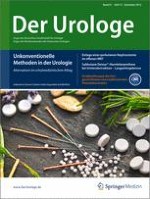Erschienen in:

01.12.2012 | Leitthema
Aspekte der traditionellen indischen Medizin (Ayurveda) in der Urologie
verfasst von:
Dr. J. Mani, S. Kumar, G.J. Dobos, A. Haferkamp
Erschienen in:
Die Urologie
|
Ausgabe 12/2012
Einloggen, um Zugang zu erhalten
Zusammenfassung
Ayurveda ist global gesehen das älteste System und die zumeist angewandte Naturheilkunde in Indien. Der Unterschied zur westlichen Medizin besteht darin, dass diese Heilkunde auf jahrtausendealte Erfahrungswerte, Empirie und Intuition basiert. Diese wurden über Generationen sowohl mündlich als auch über Aufzeichnungen übermittelt. Ayurveda bezieht sich nicht nur auf den Körper, sondern auch auf den Geist. Demnach resultieren die meisten Krankheiten durch die psychophysiologischen und pathologischen Veränderungen im Körper. Letztendlich ist die ausgeglichene Balance zwischen Körper, Geist und Seele die ayurvedische Definition von Gesundheit. Ayurvedische Medizin wird im Rahmen der Behandlung der Urolithiasis zur Diurese, zur Litholyse, spasmoanalgetisch und antimikrobiell eingesetzt.
